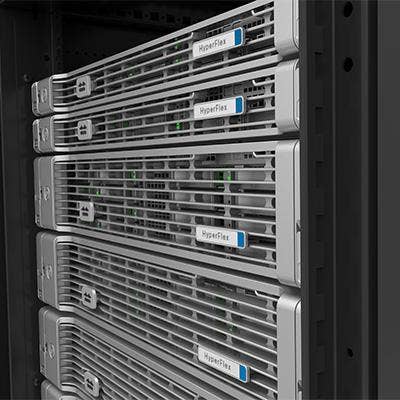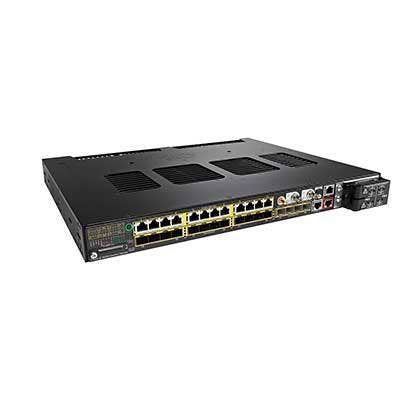10 Takeaways From Cisco Earnings: Layoffs, HyperFlex, Brexit And More

Cisco Q4 Takeaways
There was plenty of buzz around Cisco heading into its fourth fiscal quarter earnings call on Wednesday and rightfully so, as the networking giant announced layoffs, unveiled a restructuring plan and beat Wall Street estimates.
"There's a huge effort trying to become more operationally efficient inside Cisco," said Zeus Kerravala, principal analyst at ZK Research based in Westminster, Mass. "They've acquired a lot of companies, so they probably have a lot of overhead and redundancy from those things. But I also think as the company changes and becomes more software and cloud-oriented, they're going to need different skills."
San Jose, Calif.-based Cisco also revealed huge security sales growth, reported declines in routing product sales, and disclosed the number of customers for HyperFlex Systems, the company's hyper-converged solution.

Internal Restructuring
CEO Chuck Robbins revealed a massive restructuring plan currently underway at Cisco as the company shifts towards becoming a software-centric organization. Since Robbins took over the helm in July 2015, the CEO hasn't been shy about saying where he believes future growth for Cisco lies, focused on the Internet of Things, security and the cloud.
"Restructuring [enables] us to optimize our cost base in lower growth areas of our portfolio and further invest in key priority areas such as security, IoT, collaboration, next-generation data center and cloud," said Robbins, during Cisco's fourth fiscal quarter earnings call with financial analysts on Wednesday.
The majority of Cisco acquisitions over the past two years have been around security and cloud.

5,500 Layoffs
Part of Cisco's restructuring plan is to eliminate 5,500 positions. Sources recently told CRN that Cisco was planning to cut thousands of positions within the next few weeks. Cisco executives on the call did not indicate if additional cuts were to be expected in the future.
"If you ask why companies start to struggle, it's because during markets transitions they don't have the right people internally to make the transition," said Kerravala. "If you're going to be coming into Cisco now, you're going to need some cloud, security, software-type of skills, more so than the traditional networking skills. Networking is obviously going to be very important and so is hardware in what they do. But when you look at where the areas of growth are going to come from -- it's from the software that's going to run on top of it."

500 HyperFlex Customers
During the call, Robbins shed light on the amount of customers who have purchased Cisco's hyper-converged HyperFlex Systems. Approximately 500 customers are currently using HyperFlex, "and over a quarter of these are net new to UCS," said Robbins.
Cisco's data center product revenue declined 1 percent year over year to $873 million in the quarter. For the company's overall fiscal 2016, Cisco's data center sales grew 5 percent from fiscal 2015 to $3.36 billion.

Soft Q1 Outlook
For its fiscal 2017 first quarter, Cisco expects to see revenue range from down 1 percent to up 1 percent year over year, with non-GAAP earnings of 59 cents to 61 cents per share.
Cisco said the flat revenue outlook stems from weakness in demand from service providers and emerging countries during the fourth quarter.
"As we look forward, we're uncertain how to model any improvement in those two in particular going forward," said Robbins. "And the other issue is that there is some impact from the transition in our business model."

Brexit
Cisco's business in Europe, the Middle East and Africa (EMEA) declined 3 percent year over year to $3.1 billion for the fourth quarter.
"The decline [in EMEA] was largely attributed to service providers," said Robbins. "We would not suggest that the broad-based shift in the EMEA results was solely dependent upon Brexit. What we saw from a Brexit perspective is exactly what you would expect. In the U.K. proper, we saw customers pause. We saw them just kind of slow a bit because they're uncertain. And we also saw the impact of the currency devaluation which you would expect. But we remain very committed there."

Routing Slumps
One negative trend identified in the earnings report was a 6 percent year-over-year decline in routing product sales to $1.87 billion. The company reported a 5 percent decline in routing sales during its third fiscal quarter.
Kelly Kramer (pictured), CFO at Cisco, said during the earnings call that the decline in routing sales was "largely driven by the weakness we saw in the service provider space."

Double-Digit Security Growth Continues
The largest growth area for the network leader was in security sales, which increased 16 percent year over year to $540 million. This marks the third straight quarter that Cisco posted double-digit revenue growth in security.
"We delivered our third consecutive quarter of double-digit growth with revenue up 16 percent and deferred revenue growing 29 percent as a result of this shift," said Robbins, during the call. "We continue to add significant features and functionalities to our security portfolio both through internal innovation and M&A to meet our customers' most pressing needs."

Switching Turns Around
Cisco's switching business bounced back, growing 2 percent year over year to $3.79 billion. For its third fiscal quarter, Cisco reported a 3 percent year-over-year drop in switching product sales to $3.45 billion, while the company reported a 4 percent decline in those sales in its second fiscal quarter.
Kramer said the latest growth was driven by "strength in data center switching with continued momentum in ACI and the next generation data center."

Collaboration Continues Steady Growth
In collaboration, Cisco reported an increase of 6 percent, to $1.15 billion, compared with the same quarter the year before. The increase was driven by Cisco's TelePresence portfolio sales, which grew by double digits, and solid performance by WebEx, said Cisco.
"Collaboration continues to be a consistent growth driver for us," said Robbins. "Our strategy and highly differentiated portfolio delivered both on-premise and from the cloud, enabled us in fiscal year 2016 to grow revenue 9 percent to $4.4 billion."

Robbins In Charge
Partners were positive about Cisco's fourth quarter earnings, especially in regards to the restructuring changes Robbins is making.
"Freeing up dollars to accelerate market alignment is what partners would like to see," said Kent Macdonald, vice president of converged infrastructure and network services at Long View Systems, a Calgary, Alberta-based solution provider and Cisco Gold partner. "Chuck is the right guy to take Cisco through this market transition."